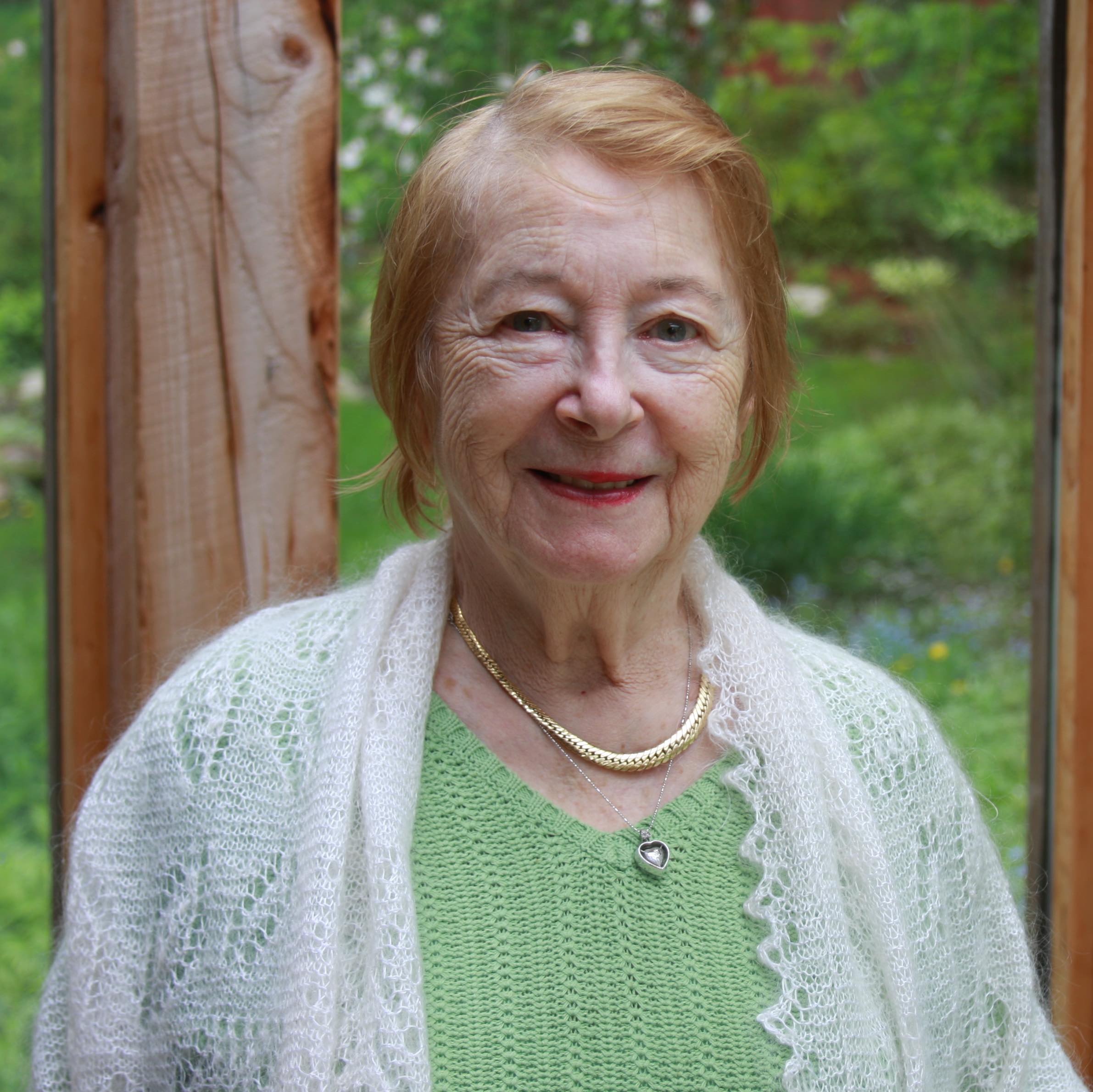
A longtime friend and colleague of Pope John Paul II recalls his visit to her home.
This piece first appeared in The Vermont Standard.
Anna-Teresa Tymieniecka has a treasure that she carefully protects. The noted and prolific philosopher holds close the memories of her association with a singular fellow human, the recently beatified Pope John Paul II. In 1976, then Cardinal Wojtyla twice visited her family at their Oak Ledge Farm in Pomfret. Now, a few photographs, a granite tablet under a plum tree in the back yard, and most particularly a three foot length of timber cut from a hardwood that had fallen in a nearby meadow, are testament to the extraordinary collaboration that spawned their thirty-year friendship.
The Polish-born Tymieniecka was a Professor of Philosophy at St. John’s University in the early 1970s when she first met Wojtyla, the Archbishop of Krakow and member of the Sacred College of Cardinals. She’d read, in Polish, his Osobo I Czyn, a treatise that discussed actions, rather than perceptions or statements, as the determinants of the human psyche. “I was enchanted by this book,” she says, and so she sent the Cardinal an invitation to speak at a conference. Tymieniecka, whose weighty academic credentials, extensive writings, and skill as an organizer and catalyst brought her notoriety in the philosophic community, wanted to convince the Cardinal that his book, although “very criticized by other Polish philosophers” was in fact “a great book,” and one that they should work together to republish in English. After several meetings in Krakow and elsewhere, he agreed.
Over the course of four years, the two discussed, refined, and rewrote. Tymieniecka often traveled to Krakow or Rome for weeks at a time. The Cardinal was, even in his fifties, an athletic and active man, so they often talked as they hiked, or at times, as they kayaked. Tymieneicka published their product, The Acting Person, in 1979, the year after Wojtyla was elected Pope.
In the midst of their labors, in the summer of 1976, the Cardinal was granted permission to leave communist Poland for a meeting of European Bishops in Philadelphia. Tymieniecka seized the occasion to also schedule several speaking engagements for the Cardinal; he was not, at that time, well known. His visits to Pomfret in July and August were the front and back ends of that trip, which Tymieniecka thinks likely was his first to the United States.
The Cardinal was surprised when he first arrived at Oak Ledge; he was expecting a mansion. “That is a real hut, a peasant hut,” recalls Tymieniecka of what he said about her modest farm house, “and that is what he loved about it,” she adds. The Cardinal was just a regular houseguest, demanding nothing, and simply wanting a few days of rural relaxation. She recalls that he was sometimes late for lunch, because he’d been swimming in the neighbor’s pond. The housekeeper’s husband reported that the Cardinal wanted to cut the grass; he did help bale hay. Amongst her pictures and papers, Tymieniecka has a photograph of him at the farm, standing next to a tractor. “He loved Vermont, he felt comfortable here,” she says, “It reminded him of the Tatra,” the mountain range that divides Poland from Slovakia.
In the mornings during the Cardinal’s visit, guests, family and a menagerie of farm animals gathered for mass, at a picnic table under the gnarled plum tree in the back yard, a spot now marked by the chiseled monument. They were largely silent masses, with no singing, Tymieniecka’s youngest son read scriptures, the Cardinal said a few words. In the evenings, they all gathered wood and sat around a bonfire; the Cardinal sang folk tunes from Poland.
Afternoons were devoted to readying for speaking engagements or working on their book. Tymieneicka remembers the Cardinal in a nearby meadow, preparing a lecture, sitting on the trunk of a tree that had fallen. She perched along side, making suggestions and helping him with grammar and pronunciation, as English was a language that was then still new to him. The section of the tree where the two sat and worked now is propped up against the wall in the corner of Tymieniecka’s sitting room.
About her most cherished memories of the Cardinal, she declines to elaborate. “He was my friend,” she says, hand on her heart, “he was a very pleasant, a very modest, charming person. I enjoyed his company, everybody did.”
In the years since Karol Cardinal Wojtyla became Pope John Paul II, some have debated the extent of Anna-Teresa Tymieniecka’s impact on his papacy. Although the Vatican at first tried to suppress publication of The Acting Person, many scholars and historians now agree that during his tenure, the Pope drew heavily on its tenets. In their biography, His Holiness, John Paul II and the Hidden History of Our Time, for example, Carl Bernstein and Marco Politi say that Tymieniecka played a “crucial role” in influencing the Pope’s philosophy, and that “she helped to make him prominent—and papabile.” But Tymieniecka herself protests. “We were discussing in general,” she says of her collaboration with the Cardinal on The Acting Person, “he was writing from his own initiative and his own ideas.”
